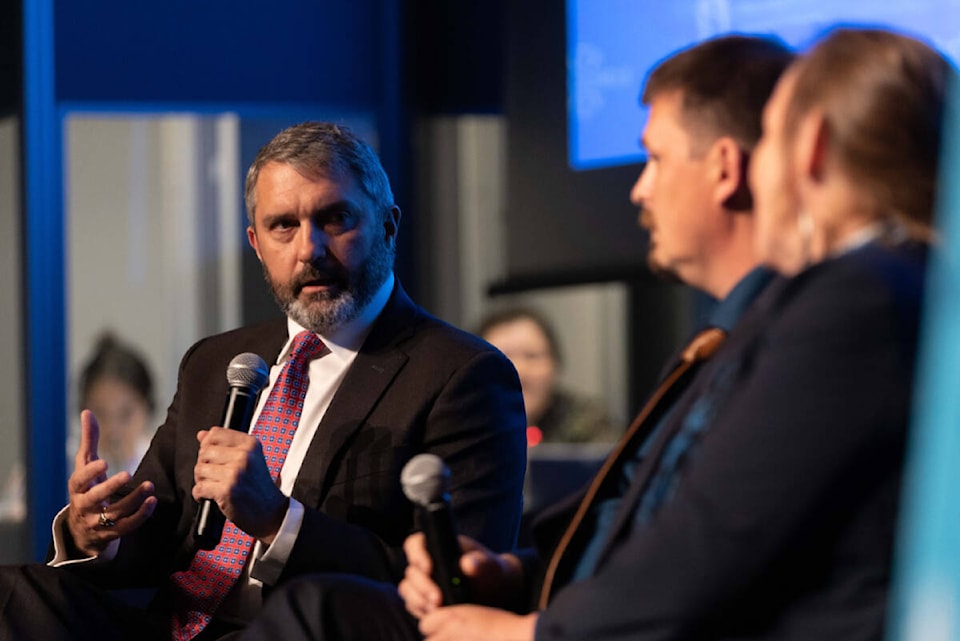Premier Sandy Silver and his northern territorial counterparts have taken their message about Arctic allyship to the international level.
In an interview on Aug. 31, Silver said eyes around the globe turned to the circumpolar world when Russia started brutally invading Ukraine and while the Russian Federation chaired the Arctic Council — and still does — with those conversations stalling.
Silver attended the Arctic Circle Greenland Forum held in Nuuk from Aug. 27 to 29.
“We are part of the global community and thus we are continuously seeking to strengthen and expand our circle of friendships and partners, especially among our closest neighbors,” Prime Minister of Greenland Múte Bourup Egede said in a press release.
Silver said every northerner should be interested in being represented by leadership at the forum given that the Yukon, Northwest Territories and Nunavut are in the middle of these conversations.
“We might be only 120,000 people, but our geographical area in the circumpolar world is monstrous. It’s massive. It’s extremely important, as well,” he said.
“If we’re talking about critical minerals, for example, Yukon represents a secure and reliable supply of 21 of those 35 critical minerals that the Canadian government has identified.”
Alongside Northwest Territories Premier Caroline Cochrane and Nunavut Premier P.J. Akeeagok, Silver led a panel discussion about setting the conditions to strengthen security and sovereignty in Canada’s North. In a joint statement following the forum, the three said the “world is looking North for the resources that will reduce global reliance on supply chains that do not support the high environmental and social standards countries and consumers demand.”
While northern and western premiers have called on the federal government to pin down new money to specifically address security and sovereignty in Canada’s North, Silver has been trying to shine a spotlight on the Canadian Rangers.
Silver explained that if national security, Arctic security and sovereignty were laid out as a Venn diagram, then the Canadian Rangers would make up the central area where those circles overlap.
“They represent us on security, being the eyes and the ears and the first defense from a military perspective, but they also keep our trails open, which is great for just connectivity in communities,” he said.
The “lightly equipped, self-sufficient mobile forces” of the Canadian Rangers are part of the Canadian Armed Forces Reserves. Canadian Rangers are set up in remote, isolated and coastal parts of the country, according to the federal government’s website.
The 1st Canadian Ranger Patrol Group is responsible for the three territories, as well as Atlin, B.C., which make up 40 per cent of the country’s land mass, with 2,000 Canadian Rangers in 61 patrols and more than 1,400 Junior Rangers in 44 patrols across 65 communities in the North.
According to Maj. Susan Magill, Joint Task Force North in Yellowknife, earlier this year there were about 255 Canadian Rangers in the Yukon. That number includes elders who know the land and people who know the communities. There were also 115 Junior Rangers under the age of 18.
READ MORE: Northern premiers wary of Russian movements in Arctic
Canadian Rangers from these patrols volunteer to participate in tasks such as presence patrols, northern and domestic operations and monitoring the North Warning System and regularly train in activities such as first aid, wilderness skills, ground search and rescue, leadership, navigation, weapon safety and special training as required.
In June, Minister of National Defence Anita Anand announced $4.9 billion to modernize Canada’s continental defence capabilities and protect Canadians from new and emerging threats like hypersonic weapons and advanced cruise missiles. In a press release, the plan includes new and improved capabilities to ensure the Canadian Armed Forces and the North American Aerospace Defense Command can detect, deter and defend against threats.
Silver has expressed that he wants money tied to the Arctic and Northern Policy Framework, which is described on the federal government’s websites as a “profound change of direction” for the feds to close the gaps and create a “lasting legacy of sustainable economic development” for the North.
“All of these conversations are connected, whether we’re talking about the circumpolar region because of climate change reasons, or if we’re talking about it for economic reasons, or in light of illegal conquests of Russia in Ukraine,” Silver said.
— With files from Lawrie Crawford
Contact Dana Hatherly at dana.hatherly@yukon-news.com
